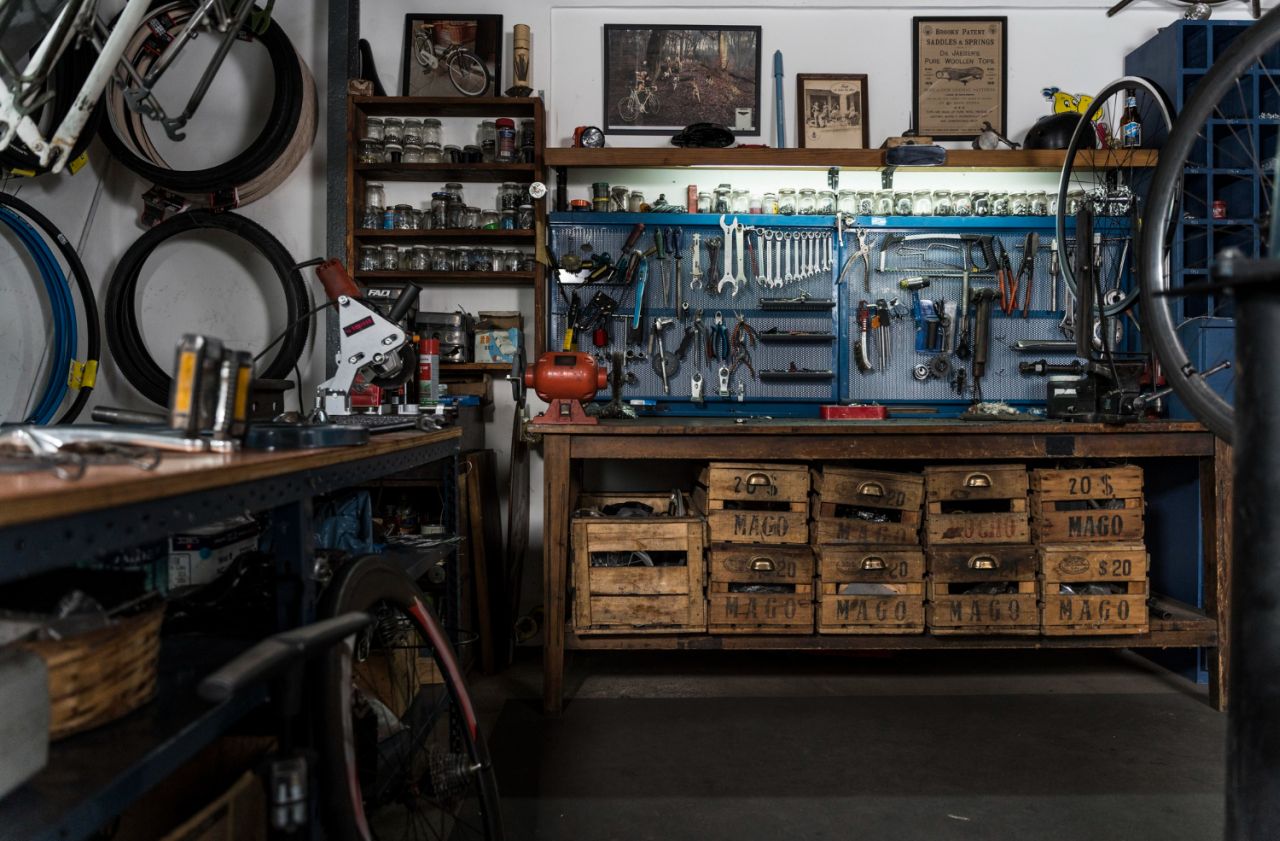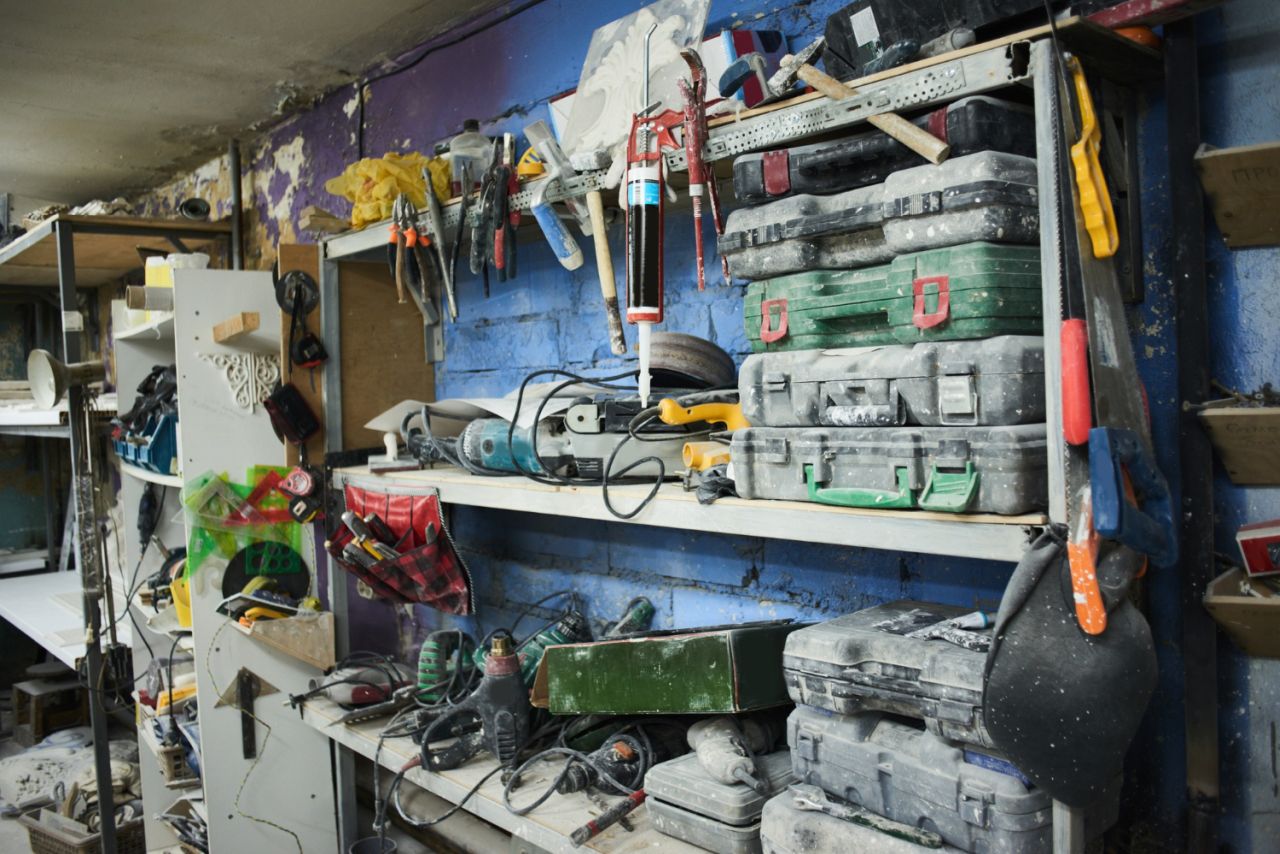One of the most important steps in choosing shelf wood is figuring out which species work best for your purposes.
Your shelves' longevity, aesthetic value, and usefulness can all be affected by the type of wood you use to construct them.
To make a well-informed choice, it is crucial to be familiar with the qualities and characteristics of various kinds of wood. Which types of wood, then, work best for shelving?
In this post, we'll look at several types of wood and discuss their benefits and drawbacks.
We will look at the characteristics that make each kind of wood most appropriate for shelving projects, from hardwoods lauded for their durability and lifespan to softer woods cherished for their affordability & versatility.
By learning about the qualities of various kinds of wood, you can select the ideal wood for building shelves that suit your unique tastes and needs.
The Factors To Consider
There are some elements to consider when choosing the wood or your garage shelves.
Considering these criteria will help you pick the ideal wood for your project. Those things are:
Durability
The garage shelves you choose should be as sturdy as possible.
Choose a wood species that won't warp or droop under the weight of your heavier objects.
Using strong wood assures that your shelves won't give you any trouble down the road.
Strength
The capacity of a piece of wood to support weight is a direct indicator of its strength.
Many of the tools, equipment, & storage boxes that end up on garage shelves are quite hefty.
If you care about the stability and endurance of your shelves, you should pick a wood species that could handle these weights.
Moisture Resistance
Problems with humidity, temperature swings, and water leaks are all things to keep an eye out for in a garage.
Choose a wood species that is naturally resistant to moisture or can be chemically treated to tolerate damp environments.
Using wood resistant to moisture helps extend the life of your garage shelving and keeps them free from issues like warping, rotting, and mould.
Cost
When deciding where on wood for their garage shelves, many individuals prioritise cost.
The cost of various types of wood varies widely. To get the most bang for your buck, you need to strike a balance between price and quality.
Taking all of this into consideration will help you select the best wood for your garage bookcases.
The advantages and disadvantages of some common types of wood will next be discussed.
Popular Wood Types
There are many common types of wood to choose from when deciding on garage shelf material.
Each variety of wood has its own set of positive and negative qualities.
Let's have a closer look at three types of wood typically used for storage shed shelves:
Plywood
Plywood is a popular and adaptable material for storage racks in the garage.
Thin wood veneers are stacked and glued together, with grain direction switching between each layer.
Plywood manufactured in this way is extremely sturdy and reliable.
Pros Of Plywood:
- Durable and resistant to warping: Plywood's longevity and resistance to warping make it a solid material for garage shelves which must hold a lot of weight.
- Strong and can support heavy loads: Plywood's layered construction gives it exceptional strength, making it suitable for supporting heavy loads such as tools, equipment, or storage containers without succumbing to drooping or bending.
- Available in various thicknesses and grades: Plywood's availability in a variety of thicknesses & grades makes it suitable for a wide variety of garage shelf applications.
- Affordable compared to solid wood options: Plywood is an economical option that doesn't skimp on strength or longevity.
Cons Of Plywood:
- May have visible wood grain patterns: Plywood's evident wood grain may not appeal to those wanting a more consistent or sophisticated appearance for their garage shelves.
- Requires proper sealing to protect against moisture damage: Plywood is more moisture-resistant than solid wood, but it still needs to be sealed properly to avoid problems caused by moisture in a damp garage.
Particle Board
Particle board, sometimes called chipboard, is a budget-friendly option for storage shed racks.
Wood fibres and an adhesive binder are compressed into this material.
Particle boards come in various grades, with the denser ones being the most long-lasting.
Pros Of Particle Board:
- Cost-effective and budget-friendly: A particle board is a common alternative for individuals on a tighter budget due to its low cost.
- Smooth and even surface for easy installation: The particle board has a uniform and smooth surface, which makes it simpler to set up shelves and make sure everything is even.
- Adequate strength for most garage storage needs: The particle board is sturdy enough to hold the weight of commonly stored things in a garage.
Cons Of Particle Board:
- Less resistant to moisture compared to other wood types: Because of its increased susceptibility to water damage, particle boards must be kept dry in the garage.
- Not as strong as plywood or solid wood options: Particle board is versatile enough to suit numerous garage storage applications, although it may not be as robust or lasting as plywood and solid wood.
Solid Wood
For a more classic and earthy look, consider installing solid wood garage shelves.
Pine, oak, and cedar are just a few examples of affordable and widely available solid wood options.
Pros Of Solid Wood:
- Exceptional strength and durability: Because of its strength and longevity, solid wood is a great material for storage shelves in the garage.
- Attractive natural grain patterns: Garages can benefit from solid wood's innate beauty and distinctive grain patterns.
- Can be stained or painted to match any garage decor: Since solid wood can indeed be stained or painted to match the aesthetic and colour palette of your garage, it is a great material to use.
- Resistant to warping and able to support heavy loads: The structural integrity of solid wood is not compromised by severe loads, and it is extremely resistant to warping.
Cons Of Solid Wood:
- Generally more expensive compared to plywood or particle board: The entire cost of your garage shelves project may be affected by your decision to choose solid wood rather than cheaper alternatives.
- Susceptible to moisture damage if not properly sealed or treated: Warping, rotting, and mould growth are all moisture-related problems that can affect solid wood if it hasn't been properly sealed or treated.
By weighing these benefits and drawbacks, you'll be more equipped to choose the sort of wood that will meet your needs, budget, and aesthetic preferences for garage shelving.
What Kind of Wood Do You Need for Bookshelves?
Consider the shelves' intended use while deciding on an appropriate wood for them.
Do you plan on displaying books, craft supplies, souvenirs, or even family photos or using them to store and show heavy tools?

Think about the space and how you'll be securing or mounting the shelves.
Picking the right wood for your shelving requires consideration of both your available space and your budget.
The following are a few of the most prevalent woods for shelving and other household tasks, along with a discussion of why they are so well-liked.
Pine
Because of its availability, low cost, and durability, it is frequently used to construct wooden shelves.
It's perfect for do-it-yourself endeavours because it's lightweight and simple to manipulate.
Pine's natural grain is appealing, and the wood may be used in an unfinished state without worrying about fading or warping from exposure.
A little stain or wash helps protect the wood and draw attention to the grain, but it is unnecessary. If you take good care of your pine shelves, they should survive for decades rather than years.
Cherry
A beautiful and long-lasting wood that is often used for shelving.
The reddish brown colour and fine grain patterns make this wood a sophisticated addition to any decor.
Cherry's durability makes it a great option for pieces like bookcases where weight is likely to be applied to the shelves.
Cherry's inherent resistance to rot, warping, and splitting makes it a great choice for building long-lasting shelving units.
The natural beauty of this coloured wood can be highlighted by applying a transparent stain and varnish in a light colour. However, this is by no means required.
Koa
Native to Hawaii, this hardwood is prized for its beautiful grain and long lifespan. If you want to create a bold design statement in your house, Koa wood shelves are the way to go.
Its one-of-a-kind grain pattern can give any space an exotic feel.
Koa wood is highly resistant to decay, making it a good choice for damp environments.
It won't warp or twist with time, so your shelves will stay nice and straight.
Finally, koa's modest weight and high strength mean your bookshelves won't buckle under the load.
Red Oak
Perfect for use in constructing rustic bookcases.
It is sturdy and long-lasting, making it ideal for sustaining the weight of books and other shelf contents.
The distinctive grain pattern of red oak makes it a desirable material for interior design.
Stains and finishes take to this wood type quite well, providing you with a wide range of possibilities for customising the appearance of your bookcases.
Finally, if you're looking for quality at a reasonable price, red oak is a great option because it's more affordable than other hardwoods such as cherry or walnut.
Padauk
Paduak is an excellent choice for shelving because of its strength and longevity.
Its vivid reddish-orange hue will liven up any space.
Padauk is extremely stable and long-lasting because of its resistance to rot, warping, & shrinking with time.
Its hardwood composition makes it less likely as your shelves will sag under weight or warp in damp conditions.
Padauk's distinctive grain pattern also ensures that no two shelves you construct will look precisely similar.
Mahogany
Excellent material for constructing wooden racks.
The richness of its colour and grain makes it ideal for use as furniture and shelving.
In addition to its beauty, mahogany is extremely long-lasting and resistant to damage and warping.
In addition, mahogany's low cost makes it a good choice for someone on a tighter budget who wants high-quality shelving.
Last but not least, mahogany does not require any additional tools or finishes to keep it looking good year after year; instead, it produces its protective finish once exposed to the outdoors, which helps it resist water.
Plywood
Because of its low cost and adaptability, it is frequently used for shelving.
You can pick the ideal thickness for your work from several options.
Plywood is strong and long-lasting, making it an excellent choice for heavy-duty applications.
Plywood's smooth surface makes it simple to decorate with paint/stain.
Plywood is a great material for do-it-yourselfers to utilise for constructing bookshelves because of its low price and ease of use.
Additional Things To Think About
When constructing storage shelves for a garage, it's not just the sort of wood that matters.
Your shelving system will benefit from these considerations regarding its usefulness, attractiveness, and longevity. Let's have a look at them:
Design And Layout Of Shelves
Consider the objects you intend to store while deciding on the shape and number of shelves.
Ensure the shelves are the right height, width, & depth to store everything you need.
If your storage requirements evolve, consider installing movable shelves.
Anchoring And Installation
Make sure your garage shelves are securely anchored and installed for maximum stability.
Consider utilising strong brackets, hooks, or wall-mounted solutions to keep the shelves in place, especially if you plan to store heavy things.
Sealants And Finishes
The wood's longevity and resistance to moisture can be improved by finishing and sealing it properly.
Protect wooden shelves from dampness, scratches, and damage by using wood varnishes or garage-specific paints.
Cleansing And Maintenance
Your garage shelves will last longer if you take care of them regularly.
Dust, debris, and potential spills should be wiped off surfaces regularly.
Follow the manufacturer's instructions for maintenance and cleaning to keep the wood in good condition and avoid using harsh chemicals.
Accessories And Organisational Systems
You can improve the utility of your garage shelves by installing hooks, bins, and drawers, among other organisational systems and accessories.
Smaller objects may be organised and stored more efficiently with the help of these modifications, which also improve accessibility.
Considering these other considerations will help you build a garage shelving system that is simultaneously attractive and practical, helping you better organise your garage.
Conclusion
The most important step in choosing shelf wood is to be familiar with the qualities and characteristics of various types of wood.
These include durability, strength, moisture resistance, and cost.
Durability is important for garage shelves, as it won't warp or droop under the weight of heavier objects.
Strength is important for tools, equipment, and storage boxes, and moisture resistance is important for humidity, temperature swings, and water leaks.
Cost is important to get the most bang for your buck.
The most important details in this text are the advantages and disadvantages of three common wood types for garage bookcases.
Plywood is a popular and adaptable material for storage racks in the garage, with its longevity and resistance to warping making it a solid material for garage shelves which must hold a lot of weight.
Particle board is a budget-friendly option for storage shed racks due to its low cost and smooth and even surface for easy installation.
It is sturdy enough to hold the weight of commonly stored things in a garage.
The most important details in this text are the pros and drawbacks of particle board and solid wood garage shelves.
Particle board is less resistant to moisture than other wood types, and is not as strong as plywood or solid wood options.
Solid wood is also more expensive and susceptible to moisture damage if not properly sealed or treated.
To choose the right wood for your garage shelving project, consider the intended use, space, and budget.
The following are some of the most prevalent woods for shelving and other household tasks, and why they are so well-liked.
Pine is a popular choice for wooden shelves due to its availability, low cost, and durability.
Cherry is a beautiful and long-lasting wood with a reddish brown colour and fine grain patterns.
Koa wood is prized for its beautiful grain and long lifespan, while Red Oak is sturdy and long-lasting.
Paduak is an excellent choice for shelving due to its strength and longevity.
Its vibrant reddish-orange hue will liven up any space and is resistant to rot, warping, and shrinking with time.
Padauk is a hardwood material with a distinctive grain pattern, making it ideal for constructing wooden racks.
Mahogany is long-lasting and resistant to damage and warping, and its low cost makes it a good choice for someone on a tighter budget.
Plywood is strong and long-lasting, and its smooth surface makes it easy to decorate with paint/stain.
Consider the design, layout, anchoring, sealing, cleaning, and organisational systems of a garage shelving system to ensure its usefulness, attractiveness, and longevity.

Design and layout of shelves should be the right height, width, & depth, anchoring and installation should be secure, varnishes and finishes should be used, cleaning and maintenance should be done regularly, and accessories and organisational systems should be installed.
These considerations will help build a garage shelving system that is both attractive and practical.
Content Summary:
- One of the most important steps in choosing shelf wood is figuring out which species work best for your purposes.
- Your shelves' longevity, aesthetic value, and usefulness can all be affected by the type of wood you use to construct them.
- To make a well-informed choice, it is crucial to be familiar with the qualities and characteristics of various kinds of wood.
- In this post, we'll look at several types of wood and discuss their benefits and drawbacks.
- By learning about the qualities of various kinds of wood, you can select the ideal wood for building shelves that suit your unique tastes and needs.
- Considering these criteria will help you pick the ideal wood for your project.
- If you care about the stability and endurance of your shelves, you should pick a wood species that could handle these weights.
- The cost of various types of wood varies widely.
- To get the most bang for your buck, you need to strike a balance between price and quality.
- Taking all of this into consideration will help you select the best wood for your garage bookcases.
- The advantages and disadvantages of some common types of wood will next be discussed.
- There are many common types of wood to choose from when deciding on garage shelf material.
- Each variety of wood has its own set of positive and negative qualities.
- Let's have a closer look at three types of wood typically used for storage shed shelves. Plywood is a popular and adaptable material for storage racks in the garage.
- Solid Wood For a more classic and earthy look, consider installing solid wood garage shelves.
- Because of its strength and longevity, solid wood is a great material for storage shelves in the garage.
- Generally more expensive compared to plywood or particle board: The entire cost of your garage shelves project may be affected by your decision to choose solid wood rather than cheaper alternatives.
- By weighing these benefits and drawbacks, you'll be more equipped to choose the sort of wood that will meet your needs, budget, and aesthetic preferences for garage shelving.
- Consider the shelves' intended use while deciding on an appropriate wood for them.
- Picking the right wood for your shelving requires consideration of both your available space and your budget.
- The following are a few of the most prevalent woods for shelving and other household tasks, along with a discussion of why they are so well-liked.
- If you take good care of your pine shelves, they should survive for decades rather than years.
- A beautiful and long-lasting wood that is often used for shelving.
- If you want to create a bold design statement in your house, Koa wood shelves are the way to go.
- The distinctive grain pattern of red oak makes it a desirable material for interior design.
- Its hardwood composition makes it less likely as your shelves will sag under weight or warp in damp conditions.
- Excellent material for constructing wooden racks.
- The richness of its colour and grain makes it ideal for use as furniture and shelving.
- In addition to its beauty, mahogany is extremely long-lasting and resistant to damage and warping.
- In addition, mahogany's low cost makes it a good choice for someone on a tighter budget who wants high-quality shelving.
- Because of its low cost and adaptability, it is frequently used for shelving.
- You can pick the ideal thickness for your work from several options.
- Plywood is strong and long-lasting, making it an excellent choice for heavy-duty applications.
- When constructing storage shelves for a garage, it's not just the sort of wood that matters.
- Your shelving system will benefit from these considerations regarding its usefulness, attractiveness, and longevity.
- Consider the objects you intend to store while deciding on the shape and number of shelves.
- Ensure the shelves are the right height, width, & depth to store everything you need.
- If your storage requirements evolve, consider installing movable shelves.
- Make sure your garage shelves are securely anchored and installed for maximum stability.
- Consider utilising strong brackets, hooks, or wall-mounted solutions to keep the shelves in place, especially if you plan to store heavy things.
- Your garage shelves will last longer if you take care of them regularly.
- Follow the manufacturer's instructions for maintenance and cleaning to keep the wood in good condition and avoid using harsh chemicals.
- You can improve the utility of your garage shelves by installing hooks, bins, and drawers, among other organisational systems and accessories.
- Considering these other considerations will help you build a garage shelving system that is simultaneously attractive and practical, helping you better organise your garage.
Frequently Asked Questions About Garage Shelves
Can I use reclaimed wood for garage shelves?
Reclaimed wood can be used for garage shelves, but it may require additional preparation and maintenance due to its previous use and potential wear.
Is it necessary to use treated wood for garage shelves?
Using treated wood for garage shelves is recommended, especially if the environment is prone to moisture or humidity. Treated wood helps prevent rot and damage caused by these factors.
How much weight can garage shelves hold?
The weight capacity of garage shelves depends on the type of wood, design, and construction. It is advisable to follow the manufacturer's guidelines or consult a professional if you have specific heavy storage requirements.
Should I paint or stain the wood for the garage shelves?
Whether to paint or stain the wood for garage shelves depends on personal preference and the desired aesthetic. Both options can provide protection and enhance the appearance of the wood.
Can I use plastic or metal shelves in the garage instead of wood?
Yes, plastic or metal shelves can be used in the garage as an alternative to wood. However, wood is often preferred for its natural warmth, versatility, and ease of customisation.





